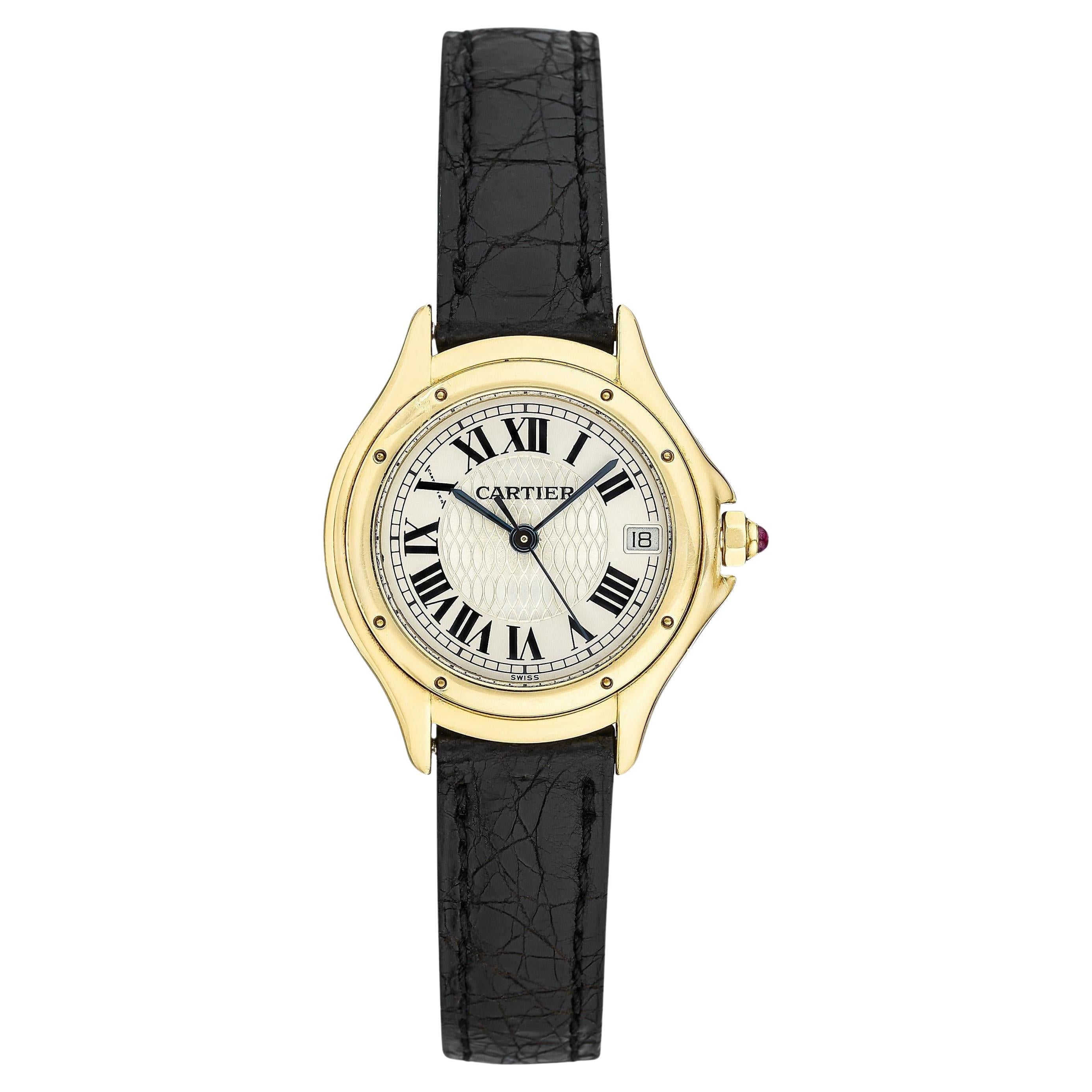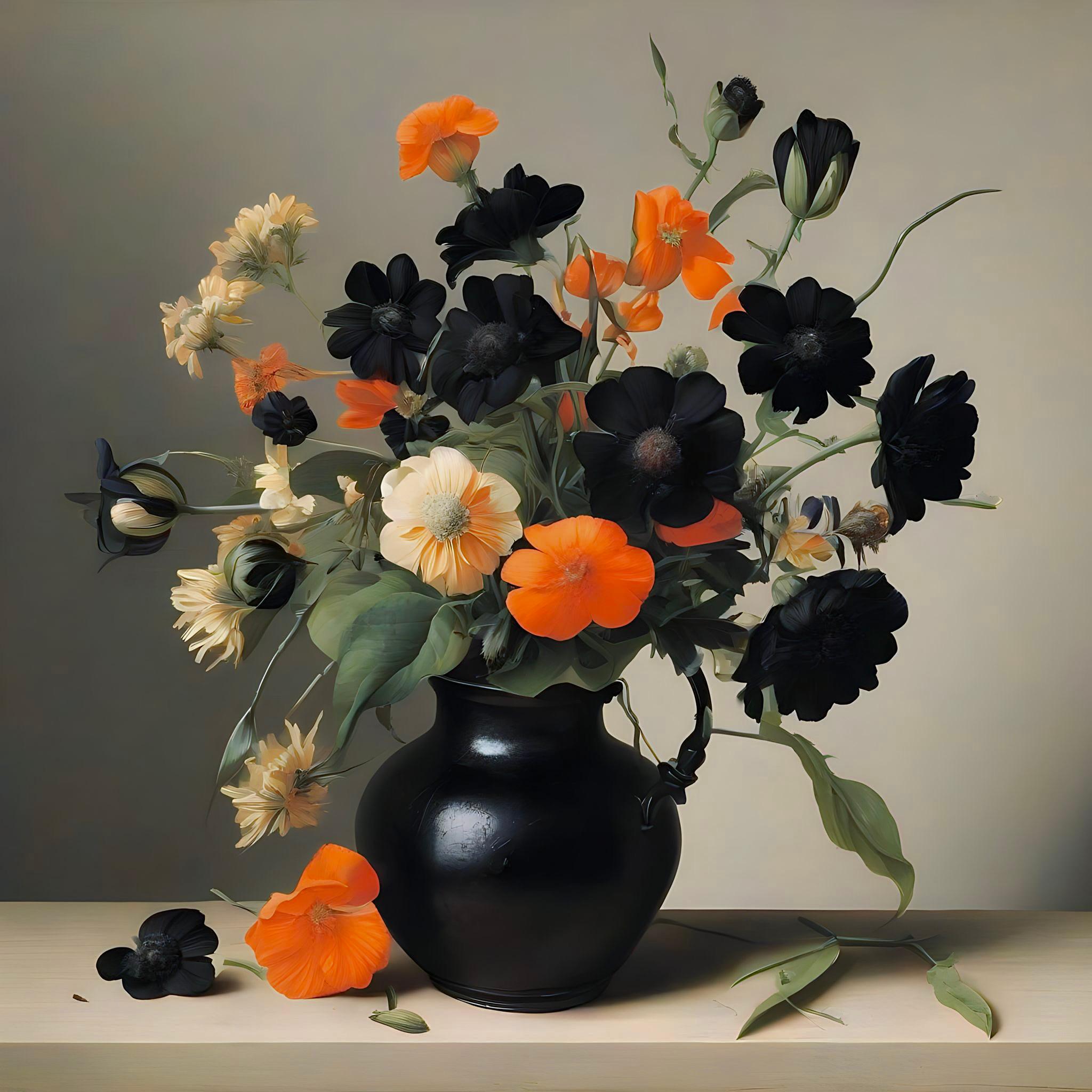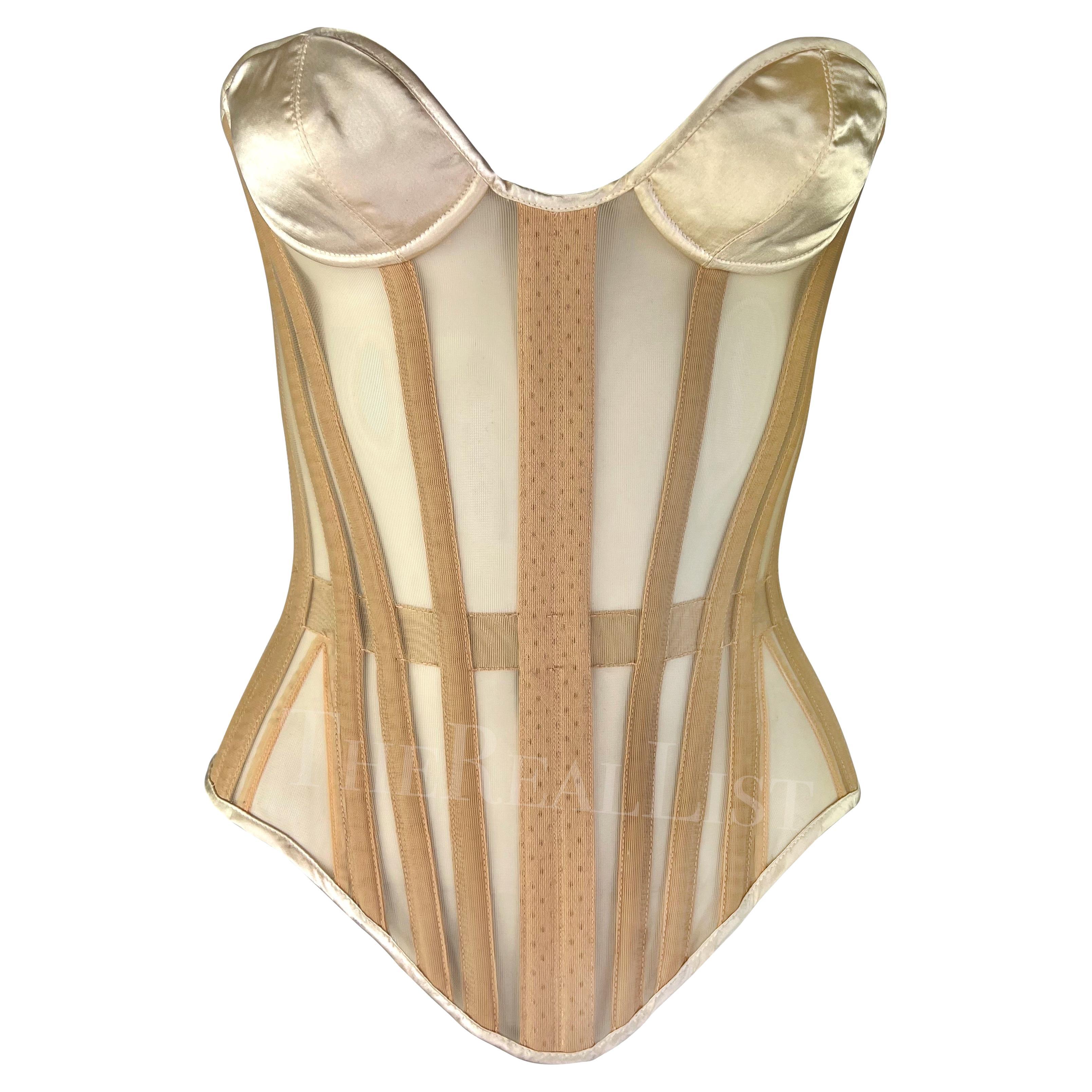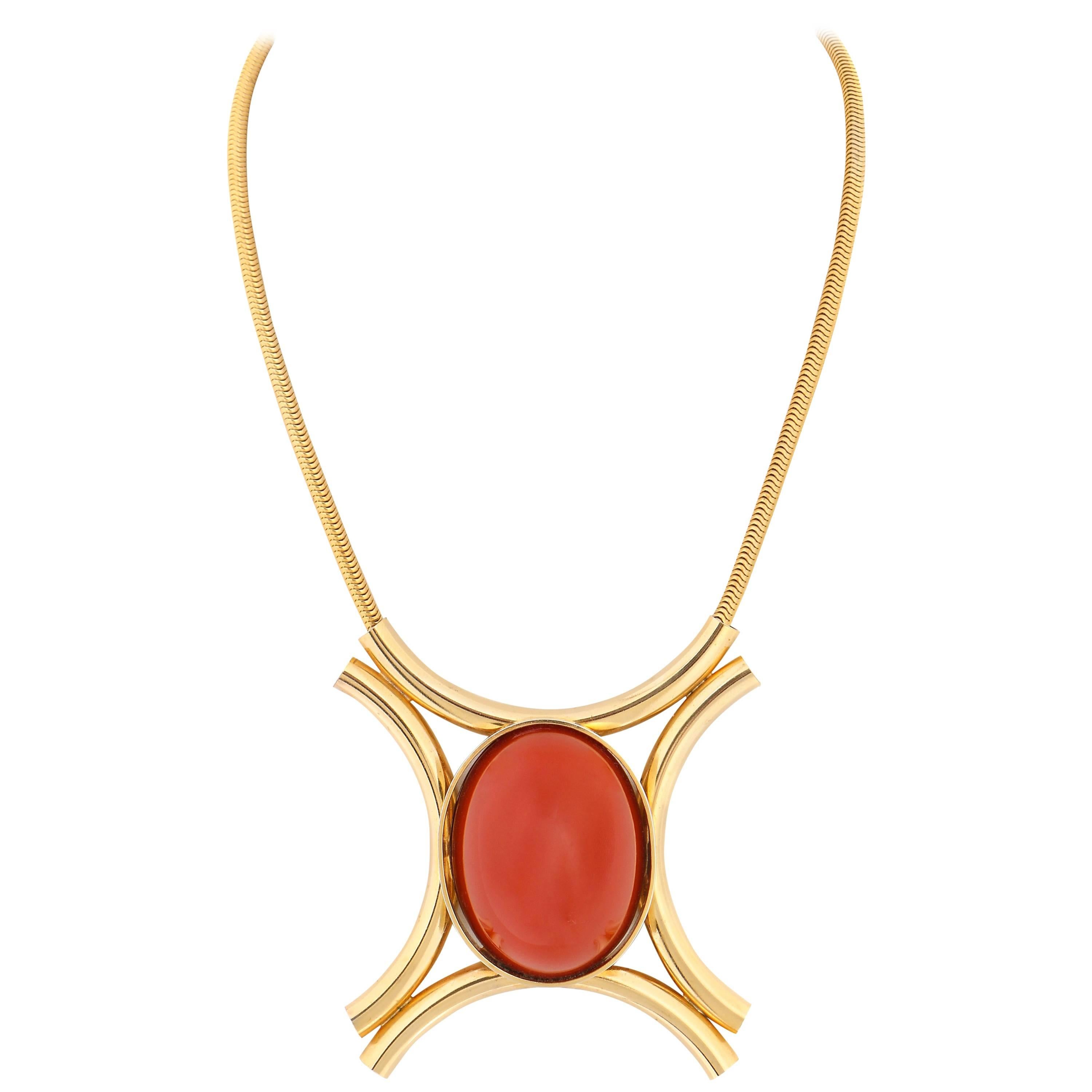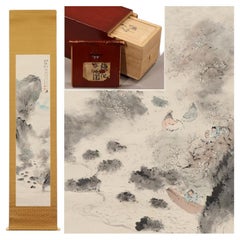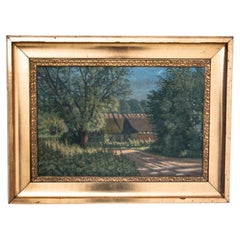Paintings on Sale
32
to
19
13
32
32
32
4
1
1
1
1
1
167
390
1,722
282
242
682
488
32
18
40
81
62
116
206
139
88
93
Height
to
Width
to
21
18
14
9
6
23
6
6
2
2
1
1
1
1
1
Sale Items
Period: Early 1900s
Japanese Painting Meiji / Taisho Period Scroll by Dokuzan Hashimoto Zen Buddhism
Located in Amsterdam, Noord Holland
Hashimoto Dokuzan was a leading figure in early twentieth-century Zen Buddhism, serving as abbot of the major monastery Shōkokuji in the city of Kyoto and served as chief, kanchō, of the Shōkokuji branch of the Rinzai sect of Zen from 1909 to 1933. Before he entered the priesthood, he trained to be a painter under the celebrated literati artist Tomioka Tessai and continued to paint throughout his life. The present worked shows a lone Chinese man in a deep woods, leaning over the railing of a stone bridge to gaze at rushing stream below—a scene of communion with nature that East Asian painters...
Category
Antique Early 1900s Taisho Paintings
Materials
Silk
Japanese Painting Meiji Scroll Taizo Tae Nihonga New Year's Day, 1903
Located in Amsterdam, Noord Holland
The following is a work depicting a picture of bamboo in the snow, drawn by Sodo Tae (Taizo).
[Tae Sodo]
1870 (Meiji 3) - 1939 (Showa 14)
Agricultural manager, politician, an...
Category
Antique Early 1900s Edo Paintings
Materials
Silk
Japanese Painting Meiji 1903 Scroll Suzuki Shoutoshi Nihonga New Year's Day 1903
Located in Amsterdam, Noord Holland
Product Description
This is a work drawn by Matsutoshi Suzuki on New Year's Day, 1903, as you can see.
The figure of the zodiac ``Snake'' and a jewel are depicted, and a poem of prai...
Category
Antique Early 1900s Edo Paintings
Materials
Silk
Large oil on canvas Painting Artwork by O. Redgrave Still life with Genie
Located in Wisbech, Cambridgeshire
Large oil on canvas Painting Artwork by O. Redgrave Still life with Genie C1900.
An impressive large work.
Something really different that would look great in the right location!
...
Category
Antique Early 1900s Paintings
Materials
Canvas
The painting "Country Cottage", L. Kyhn, Denmark, 1909.
Located in Chorzów, PL
The painting "Country Cottage".
Origin : Denmark, early XX century - 1909
Paintor : signed L. Kyhn
Dimensions:
Frame: height 64 cm / width 85 cm
Image: height 41 cm / width 62 cm
Category
Antique Early 1900s Scandinavian Other Paintings
Materials
Canvas
Painting "Kayaking harbour". signed Frederiksen, Denmark, early XX century
Located in Chorzów, PL
Painting "Kayaking harbour".
Origin : Denmark, early XX century
Paintor : signed :
Frederiksen
Dimensions:
Frame: height 52 cm / width 74 cm
Image: height 33 cm / width 54 cm
Category
Antique Early 1900s Scandinavian Other Paintings
Materials
Canvas
Antique German oil painting "Portrait of a Maiden" from 1901 signed Konig
Located in Traversetolo, IT
Antique German oil painting "Portrait of a Maiden" dated 1901 signed Konig,the author demonstrates good mastery in the use of colors and technique,the forest in the background,the wr...
Category
Antique Early 1900s German Art Nouveau Paintings
Materials
Wood
Large Oil on Canvas with Young Gypsy Fortune Teller
Located in Madrid, ES
Large Oil On Canvas With Young Gypsy Fortune teller.
LARGE OIL ON CANVAS WITH YOUNG Gypsy guessing the future VERY INTERESTING OIL ON CANVAS REPRESENTING A YOUNG Gypsy guessing the FUTURE. IT IS SIGNED BY: PRADILLA AND TITLE: discovering the future. CIRCA 1900. MEASURES 104X94 CM ONLY OIL WITHOUT FRAME . Francisco Pradilla...
Category
Antique Early 1900s Paintings
Materials
Canvas
After Raffaello Sanzio 1483-1520 Raphael La Madonna della Seggiola Oil on Canvas
By (after) Raphael (Raffaello Sanzio da Urbino)
Located in Los Angeles, CA
A Fine Italian 19th Century Oil Painting on Canvas "La Madonna della Seggiola" after Raphael (Raffaello Sanzio da Urbino 1483-1520). The circular painted canvas depicting a seated Madonna holding an infant Jesus Christ next to a child Saint John the Baptist, all within a massive carved two-tone gilt wood, gilt-patinated and gesso frame, which is identical to the frame on Raphael's original artwork. This painting is a 19th Century copy of Raphael's Madonna della Seggiola painted in 1514 and currently exhibited and part of the permanent collection at the Palazzo Pitti, Galleria Palatina, Florence, Italy. The bodies of the Virgin, Christ, and the boy Baptist fill the whole picture. The tender, natural looking embrace of the Mother and Child, and the harmonious grouping of the figures in the round, have made this one of Raphael's most popular Madonnas. The isolated chair leg is reminiscent of papal furniture, which has led to the assumption that Leo X himself commissioned the painting. Circa: 1890-1900.
Subject: Religious painting
Painting diameter: 28 inches (71.1 cm)
Frame height: 55 1/8 inches (140 cm)
Frame width: 46 inches (116.8 cm)
Frame depth: 5 1/8 inches (13 cm)
Raffaello Sanzio da Urbino (Italian, March 28 or April 6, 1483 - April 6, 1520), known as Raphael, was an Italian painter and architect of the High Renaissance. His work is admired for its clarity of form, ease of composition, and visual achievement of the Neoplatonic ideal of human grandeur. Together with Michelangelo and Leonardo da Vinci, he forms the traditional trinity of great masters of that period.
Raphael was enormously productive, running an unusually large workshop and, despite his death at 37, leaving a large body of work. Many of his works are found in the Vatican Palace, where the frescoed Raphael Rooms were the central, and the largest, work of his career. The best known work is The School of Athens in the Vatican Stanza della Segnatura. After his early years in Rome much of his work was executed by his workshop from his drawings, with considerable loss of quality. He was extremely influential in his lifetime, though outside Rome his work was mostly known from his collaborative printmaking.
After his death, the influence of his great rival Michelangelo was more widespread until the 18th and 19th centuries, when Raphael's more serene and harmonious qualities were again regarded as the highest models. His career falls naturally into three phases and three styles, first described by Giorgio Vasari: his early years in Umbria, then a period of about four years (1504–1508) absorbing the artistic traditions of Florence, followed by his last hectic and triumphant twelve years in Rome, working for two Popes and their close associates.
Raphael was born in the small but artistically significant central Italian city of Urbino in the Marche region, where his father Giovanni Santi was court painter to the Duke. The reputation of the court had been established by Federico III da Montefeltro, a highly successful condottiere who had been created Duke of Urbino by the Pope - Urbino formed part of the Papal States - and who died the year before Raphael was born. The emphasis of Federico's court was rather more literary than artistic, but Giovanni Santi was a poet of sorts as well as a painter, and had written a rhymed chronicle of the life of Federico, and both wrote the texts and produced the decor for masque-like court entertainments. His poem to Federico shows him as keen to show awareness of the most advanced North Italian painters, and Early Netherlandish artists as well. In the very small court of Urbino he was probably more integrated into the central circle of the ruling family than most court painters.
Federico was succeeded by his son Guidobaldo da Montefeltro, who married Elisabetta Gonzaga, daughter of the ruler of Mantua, the most brilliant of the smaller Italian courts for both music and the visual arts. Under them, the court continued as a centre for literary culture. Growing up in the circle of this small court gave Raphael the excellent manners and social skills stressed by Vasari. Court life in Urbino at just after this period was to become set as the model of the virtues of the Italian humanist court through Baldassare Castiglione's depiction of it in his classic work The Book of the Courtier, published in 1528. Castiglione moved to Urbino in 1504, when Raphael was no longer based there but frequently visited, and they became good friends. He became close to other regular visitors to the court: Pietro Bibbiena and Pietro Bembo, both later cardinals, were already becoming well known as writers, and would be in Rome during Raphael's period there. Raphael mixed easily in the highest circles throughout his life, one of the factors that tended to give a misleading impression of effortlessness to his career. He did not receive a full humanistic education however; it is unclear how easily he read Latin.
Early Life and Works
His mother Màgia died in 1491 when Raphael was eight, followed on August 1, 1494 by his father, who had already remarried. Raphael was thus orphaned at eleven; his formal guardian became his only paternal uncle Bartolomeo, a priest, who subsequently engaged in litigation with his stepmother. He probably continued to live with his stepmother when not staying as an apprentice with a master. He had already shown talent, according to Vasari, who says that Raphael had been "a great help to his father". A self-portrait drawing from his teenage years shows his precocity. His father's workshop continued and, probably together with his stepmother, Raphael evidently played a part in managing it from a very early age. In Urbino, he came into contact with the works of Paolo Uccello, previously the court painter (d. 1475), and Luca Signorelli, who until 1498 was based in nearby Città di Castello.
According to Vasari, his father placed him in the workshop of the Umbrian master Pietro Perugino as an apprentice "despite the tears of his mother". The evidence of an apprenticeship comes only from Vasari and another source, and has been disputed—eight was very early for an apprenticeship to begin. An alternative theory is that he received at least some training from Timoteo Viti, who acted as court painter in Urbino from 1495.Most modern historians agree that Raphael at least worked as an assistant to Perugino from around 1500; the influence of Perugino on Raphael's early work is very clear: "probably no other pupil of genius has ever absorbed so much of his master's teaching as Raphael did", according to Wölfflin. Vasari wrote that it was impossible to distinguish between their hands at this period, but many modern art historians claim to do better and detect his hand in specific areas of works by Perugino or his workshop. Apart from stylistic closeness, their techniques are very similar as well, for example having paint applied thickly, using an oil varnish medium, in shadows and darker garments, but very thinly on flesh areas. An excess of resin in the varnish often causes cracking of areas of paint in the works of both masters. The Perugino workshop was active in both Perugia and Florence, perhaps maintaining two permanent branches. Raphael is described as a "master", that is to say fully trained, in December 1500.
His first documented work was the Baronci altarpiece for the church of Saint Nicholas of Tolentino in Città di Castello, a town halfway between Perugia and Urbino. Evangelista da Pian di Meleto, who had worked for his father, was also named in the commission. It was commissioned in 1500 and finished in 1501; now only some cut sections and a preparatory drawing remain. In the following years he painted works for other churches there, including the Mond Crucifixion (about 1503) and the Brera Wedding of the Virgin (1504), and for Perugia, such as the Oddi Altarpiece. He very probably also visited Florence in this period. These are large works, some in fresco, where Raphael confidently marshals his compositions in the somewhat static style of Perugino. He also painted many small and exquisite cabinet paintings in these years, probably mostly for the connoisseurs in the Urbino court, like the Three Graces and St. Michael, and he began to paint Madonnas and portraits. In 1502 he went to Siena at the invitation of another pupil of Perugino, Pinturicchio, "being a friend of Raphael and knowing him to be a draughtsman of the highest quality" to help with the cartoons, and very likely the designs, for a fresco series in the Piccolomini Library in Siena Cathedral. He was evidently already much in demand even at this early stage in his career.
Influence of Florence
Raphael led a "nomadic" life, working in various centres in Northern Italy, but spent a good deal of time in Florence, perhaps from about 1504. Although there is traditional reference to a "Florentine period...
Category
Antique Early 1900s Italian Baroque Paintings
Materials
Canvas, Giltwood
After Raffaello Sanzio 1483-1520 Raphael La Madonna della Seggiola Oil on Canvas
By (after) Raphael (Raffaello Sanzio da Urbino)
Located in Los Angeles, CA
A Fine Italian 19th Century Oil Painting on Canvas "La Madonna della Seggiola" after Raphael (Raffaello Sanzio da Urbino 1483-1520). The circular painted canvas depicting a seated Madonna holding an infant Jesus Christ next to a child Saint John the Baptist, all within a massive carved gilt wood and gesso frame, which is identical to the frame on Raphael's original artwork. This painting is a 19th Century copy of Raphael's Madonna della Seggiola painted in 1514 and currently exhibited and part of the permanent collection at the Palazzo Pitti, Galleria Palatina, Florence, Italy. The bodies of the Virgin, Christ, and the boy Baptist fill the whole picture. The tender, natural looking embrace of the Mother and Child, and the harmonious grouping of the figures in the round, have made this one of Raphael's most popular Madonnas. The isolated chair leg is reminiscent of papal furniture, which has led to the assumption that Leo X himself commissioned the painting. A retailer's label reads " Fred K/ Keer's Sons - Framers and Fine Art Dealers - 917 Broad St. Newark, N.J." - Another label from the gilder reads "Carlo Bartolini - Doratore e Verniciatori - Via Maggio 1924 - Firenze". Circa: 1890-1900.
Subject: Religious painting
Canvas diameter: 28 inches (71.1 cm)
Frame height: 54 inches (137.2 cm)
Frame width: 42 1/2 inches (108 cm)
Frame depth: 5 1/2 inches (14 cm)
Raffaello Sanzio da Urbino (Italian, March 28 or April 6, 1483 - April 6, 1520), known as Raphael, was an Italian painter and architect of the High Renaissance. His work is admired for its clarity of form, ease of composition, and visual achievement of the Neoplatonic ideal of human grandeur. Together with Michelangelo and Leonardo da Vinci, he forms the traditional trinity of great masters of that period.
Raphael was enormously productive, running an unusually large workshop and, despite his death at 37, leaving a large body of work. Many of his works are found in the Vatican Palace, where the frescoed Raphael Rooms were the central, and the largest, work of his career. The best known work is The School of Athens in the Vatican Stanza della Segnatura. After his early years in Rome much of his work was executed by his workshop from his drawings, with considerable loss of quality. He was extremely influential in his lifetime, though outside Rome his work was mostly known from his collaborative printmaking.
After his death, the influence of his great rival Michelangelo was more widespread until the 18th and 19th centuries, when Raphael's more serene and harmonious qualities were again regarded as the highest models. His career falls naturally into three phases and three styles, first described by Giorgio Vasari: his early years in Umbria, then a period of about four years (1504–1508) absorbing the artistic traditions of Florence, followed by his last hectic and triumphant twelve years in Rome, working for two Popes and their close associates.
Raphael was born in the small but artistically significant central Italian city of Urbino in the Marche region, where his father Giovanni Santi was court painter to the Duke. The reputation of the court had been established by Federico III da Montefeltro, a highly successful condottiere who had been created Duke of Urbino by the Pope - Urbino formed part of the Papal States - and who died the year before Raphael was born. The emphasis of Federico's court was rather more literary than artistic, but Giovanni Santi was a poet of sorts as well as a painter, and had written a rhymed chronicle of the life of Federico, and both wrote the texts and produced the decor for masque-like court entertainments. His poem to Federico shows him as keen to show awareness of the most advanced North Italian painters, and Early Netherlandish artists as well. In the very small court of Urbino he was probably more integrated into the central circle of the ruling family than most court painters.
Federico was succeeded by his son Guidobaldo da Montefeltro, who married Elisabetta Gonzaga, daughter of the ruler of Mantua, the most brilliant of the smaller Italian courts for both music and the visual arts. Under them, the court continued as a centre for literary culture. Growing up in the circle of this small court gave Raphael the excellent manners and social skills stressed by Vasari. Court life in Urbino at just after this period was to become set as the model of the virtues of the Italian humanist court through Baldassare Castiglione's depiction of it in his classic work The Book of the Courtier, published in 1528. Castiglione moved to Urbino in 1504, when Raphael was no longer based there but frequently visited, and they became good friends. He became close to other regular visitors to the court: Pietro Bibbiena and Pietro Bembo, both later cardinals, were already becoming well known as writers, and would be in Rome during Raphael's period there. Raphael mixed easily in the highest circles throughout his life, one of the factors that tended to give a misleading impression of effortlessness to his career. He did not receive a full humanistic education however; it is unclear how easily he read Latin.
Early Life and Works
His mother Màgia died in 1491 when Raphael was eight, followed on August 1, 1494 by his father, who had already remarried. Raphael was thus orphaned at eleven; his formal guardian became his only paternal uncle Bartolomeo, a priest, who subsequently engaged in litigation with his stepmother. He probably continued to live with his stepmother when not staying as an apprentice with a master. He had already shown talent, according to Vasari, who says that Raphael had been "a great help to his father". A self-portrait drawing from his teenage years shows his precocity. His father's workshop continued and, probably together with his stepmother, Raphael evidently played a part in managing it from a very early age. In Urbino, he came into contact with the works of Paolo Uccello, previously the court painter (d. 1475), and Luca Signorelli, who until 1498 was based in nearby Città di Castello.
According to Vasari, his father placed him in the workshop of the Umbrian master Pietro Perugino as an apprentice "despite the tears of his mother". The evidence of an apprenticeship comes only from Vasari and another source, and has been disputed—eight was very early for an apprenticeship to begin. An alternative theory is that he received at least some training from Timoteo Viti, who acted as court painter in Urbino from 1495.Most modern historians agree that Raphael at least worked as an assistant to Perugino from around 1500; the influence of Perugino on Raphael's early work is very clear: "probably no other pupil of genius has ever absorbed so much of his master's teaching as Raphael did", according to Wölfflin. Vasari wrote that it was impossible to distinguish between their hands at this period, but many modern art historians claim to do better and detect his hand in specific areas of works by Perugino or his workshop. Apart from stylistic closeness, their techniques are very similar as well, for example having paint applied thickly, using an oil varnish medium, in shadows and darker garments, but very thinly on flesh areas. An excess of resin in the varnish often causes cracking of areas of paint in the works of both masters. The Perugino workshop was active in both Perugia and Florence, perhaps maintaining two permanent branches. Raphael is described as a "master", that is to say fully trained, in December 1500.
His first documented work was the Baronci altarpiece for the church of Saint Nicholas of Tolentino in Città di Castello, a town halfway between Perugia and Urbino. Evangelista da Pian di Meleto, who had worked for his father, was also named in the commission. It was commissioned in 1500 and finished in 1501; now only some cut sections and a preparatory drawing remain. In the following years he painted works for other churches there, including the Mond Crucifixion (about 1503) and the Brera Wedding of the Virgin (1504), and for Perugia, such as the Oddi Altarpiece. He very probably also visited Florence in this period. These are large works, some in fresco, where Raphael confidently marshals his compositions in the somewhat static style of Perugino. He also painted many small and exquisite cabinet paintings in these years, probably mostly for the connoisseurs in the Urbino court, like the Three Graces and St. Michael, and he began to paint Madonnas and portraits. In 1502 he went to Siena at the invitation of another pupil of Perugino, Pinturicchio, "being a friend of Raphael and knowing him to be a draughtsman of the highest quality" to help with the cartoons, and very likely the designs, for a fresco series in the Piccolomini Library in Siena Cathedral. He was evidently already much in demand even at this early stage in his career.
Influence of Florence
Raphael led a "nomadic" life, working in various centres in Northern Italy, but spent a good deal of time in Florence, perhaps from about 1504. Although there is traditional reference to a "Florentine period...
Category
Antique Early 1900s Italian Baroque Paintings
Materials
Canvas, Giltwood
Pair of Antique Watercolors with Boats from XIXth
Located in Madrid, ES
Watercolors from around 1900 representing a French frigate and an English frigate.The two watercolors are signed: M.Alexander fecit. Dimensions: 79x64 cm with frame and 57x44 cm with...
Category
Antique Early 1900s Paintings
Materials
Paper
August Stephan Sedlacek (Austrian, 1868-1936) Oil on Canvas Violin Presentation
By Stephan Auguste Sedlacek
Located in Los Angeles, CA
Attributed to August Stephan Sedlacek (Austrian/German, 1868-1936) "The Violin Presentation" Oil on Canvas depicting an interior 18th century scene of...
Category
Antique Early 1900s French Louis XV Paintings
Materials
Gesso, Canvas, Wood
Italian 19th Century Porcelain Plaque of Madonna della Primavera, after Barabino
By Nicolò Barabino
Located in Los Angeles, CA
A very fine Italian 19th century porcelain plaque of Madonna della Primavera ("Madonna detter Primavera with Bambino"), after Nicolò Barabino (1831-1891). The finely painted standing Madonna holding baby Jesus in her arms surrounded by flowers, framed in a Gothic revival style giltwood carved frame. The back inscribed: "Madonna detter Primavera - nach Barabino" and handwritten "E. Guenther, Phila". Signed lower left corner, circa 1890-1900.
Nicolò Barabino (1831–1891) was an Italian academic painter of religious and historical subjects, active in Florence and Genoa.
He was born in Sampierdarena. His initial studies were at the Genovese Accademia Ligustica di Belle Arti, under Giuseppe Isola. In Genoa, he befriended Maurizio Dufour. In 1857, he won the Durazzo scholarship to attend the Accademia di Belle Arti in Florence. He designed some of the lunettes completed as mosaics for the portals of the Florence Cathedral...
Category
Antique Early 1900s Italian Gothic Revival Paintings
Materials
Porcelain, Giltwood
Pedro Ribera Spanish Artist, Oil on Canvas, Portrait of a Girl
Located in Copenhagen, DK
Pedro Ribera (1867-1949) Spanish artist.
Oil on canvas. Portrait of a girl.
Signed and dated 1904.
Measures 62 x 51 cm. The frame is 10 cm. wide.
A painting of Pedro Ribera was s...
Category
Antique Early 1900s Spanish Paintings
Materials
Canvas
Eduardo León Garrido (Spanish, 1856-1949) Oil on Panel "Dressing for the Ball"
By Eduardo Leon Garrido
Located in Los Angeles, CA
Eduardo León Garrido (Spanish, 1856-1949) A very Fine oil on panel "Dressing for the Ball" depicting 18th century scene of a young 'High Society' maiden getting dressed for the ball,...
Category
Antique Early 1900s Spanish Rococo Paintings
Materials
Wood
Antique Framed Impressionist Oil on Canvas by Joseph Lagasse
Located in Dallas, TX
Antique framed impressionist oil painting on canvas by Joseph Lagasse (1878-1962) is another splendid work by the artist in ...
Category
Antique Early 1900s Belgian Expressionist Paintings
Materials
Canvas
Eugenio Zampighi 'Italian, 1859-1944' 19th/20th C. Oil on Canvas "Joyous Family"
By Eugenio Zampighi
Located in Los Angeles, CA
Eugenio Zampighi (Italian, 1859-1944) A fine and charming Italian 19th/20th century oil on canvas Titled "A Joyous Family" depicting an interior scene of a seated joyous mother with her smiling toddler child on her lap, as her young daughter amuses them while holding a small kitten picked-up from the cat...
Category
Antique Early 1900s Italian Country Paintings
Materials
Gesso, Canvas, Giltwood
Karl Viktor Mayr, Austrian Oil on Canvas "An Exotic Nude Girl"
By Karl Viktor Mayr
Located in Los Angeles, CA
Karl Viktor Mayr (Austrian, 1882-1974) a very fine Austrian oil on canvas "An Exotic Nude Girl" depicting a young semi-nude woman, revealing her breast...
Category
Antique Early 1900s Austrian Folk Art Paintings
Materials
Canvas, Giltwood
Oil Painting on Canvas by Xavier Wurth
Located in Dallas, TX
Oil painting on canvas by Xavier Wurth (1869-1933) is a splendid panoramic landscape by the artist who was beloved in his native region of Liege. This par...
Category
Antique Early 1900s Belgian Belle Époque Paintings
Materials
Canvas
Large Oil Painting Ship at Sea Mountain View, 1900
Located in Berlin, DE
finely painted
Oil on canvas
Shipping scene with beautiful landscape painting.
Category
Antique Early 1900s Paintings
Materials
Canvas
Eugène Galien-Laloue "Theatre du Chatelet" Watercolor and Gouache
By Eugene Galien-Laloue
Located in Los Angeles, CA
Eugène Galien-Laloue (1854-1941) "Theatre du Chatelet" watercolor and gouache on paper signed 'E Galien Laloue' lower left, within a giltwood and gesso c...
Category
Antique Early 1900s French Belle Époque Paintings
Materials
Glass, Giltwood, Paper
Miniature Portraits of Napoleon II & Imperatrice Marie Louise of Austria
Located in West Palm Beach, FL
Pair of hand painted miniature framed portraits of Napoleon II and his mother the Archduchess Marie Louise of Austria. Marie Louise was Napoleon's...
Category
Antique Early 1900s European Empire Paintings
Materials
Glass, Paint, Wood
Original European Impressionist Oil Painting, circa 1900-1920
Located in Chicago, IL
Starting in 1874, a dedicated group of artists, referred to as; “The Anonymous Society of Painters Sculptors”, etc. organized their own exhibition in Paris and thus began the movement called, Impressionism. Members included; Claude Monet, Edgar Degas, and Camille Pissarro and others. The canvas itself measures exactly one meter high, which tells us, that this is a European Impressionist...
Category
Antique Early 1900s French Paintings
Materials
Canvas, Wood, Paint
19th Century Painting, View of a North Italian Village by a Lake
Located in Belmont, MA
Very decorative painting of an unknown artist. "View of a North Italian Village by a Lake," oil on canvas. Measurements without frame: 11.5 x 19 inches.
Category
Antique Early 1900s Italian Romantic Paintings
Materials
Canvas
Exquisite Orchid & Hummingbird Watercolor by William Morley, Antique Oversize
By William H. Morley
Located in West Palm Beach, FL
You will not be disappointed in this wonderfully hand painted piece by the world reknown William Morley. Retaining its original Gilded Age frame and in very nice condition. A waterco...
Category
Antique Early 1900s American Belle Époque Paintings
Materials
Paint, Parchment Paper
French Still Life Floral Painting by Charles Franzini d’Issoncourt
Located in Miami, FL
This captivating 19th-century still life oil painting by the award-winning French artist Charles Henri Franzini d'Issoncourt is a testament to his artistic talent. Recognized at the ...
Category
Antique Early 1900s French Baroque Paintings
Materials
Canvas, Paint, Giltwood
Ornately Giltwood Framed Floral Painting by Charles Franzini D’issoncourt
Located in Miami, FL
Original oil on canvas painting by the very talented French artist Charles Henri Franzini d’Issoncourt who won an award in Paris at the Universal Exposition in 1900 for his artwork. ...
Category
Antique Early 1900s French Baroque Paintings
Materials
Canvas, Paint, Giltwood
Watercolor of Majestic Mountain View Signed Harold Broadfield Warren
By Harold Broadfield Warren
Located in Boston, MA
Watercolor on paper of a majestic view of the mountains signed Harold Broadfield Warren. He is a well listed landscape artist who lived from 1859 to 1934. He was born in Manchester, ...
Category
Antique Early 1900s American Adirondack Paintings
Materials
Paper
Federico Ballesio Attributed 'Italian, 19th Century' Watercolor "The Courting"
By Francesco Ballesio 2
Located in Los Angeles, CA
Attributed to Federico Ballesio (Italian, 19th Century) a fine Italian watercolor and gouache on paper "The Courting". The finely painted watercolor ...
Category
Antique Early 1900s Italian Country Paintings
Materials
Giltwood, Paper
Impressive Large Original French Ship Painting by Rene Charles Louis Debraux
Located in Hopewell, NJ
Bought in Lyon, France, this significant and large sized impressionist painting is by listed French artist René Charles Louis Debraux (1868-1938). Depicting a seaside town in France,...
Category
Antique Early 1900s French Paintings
Materials
Paint, Canvas
Joseph Milne, 1861-1911, English Artist, English Landscape with Grazing Cows
Located in Copenhagen, DK
Joseph Milne, 1861-1911. English artist. English landscape with grazing cows. Title: "Pasture". High quality painting, circa 1900.
In very good condition.
Signed in the bottom left...
Category
Antique Early 1900s Scottish Paintings
Unknown Artist, Park Landscape, Oil on Canvas, circa 1900
Located in Copenhagen, DK
Unknown artist, park landscape, oil on canvas, circa 1900.
Signed illegible: J. V. Cairn.
In perfect condition.
Measures (ex. the frame) 101 x 69 cm.
The frame measures 6...
Category
Antique Early 1900s European Paintings
Recently Viewed
View AllMore Ways To Browse
Globe Crystal Chandelier
Pair Of Bagues Rock Crystal
Louis Xvi Demilune Table
Louis Xvi Style Gilt Bronze Chandelier
Wall Armed Lighting
Vintage Copper Ceiling Light
German Sputnik Lamp
Antique Pendant Light Fixture Alabaster
Led Chandelier Multi
Mid Century Bathroom Lights
Art Deco Lamps Double
Murano Table Lamps Yellow
Small Regency Chandelier
Pendant Lights Industrial Steel
Vintage Venetian Wall Mirror
Blown Glass Island Pendants
Branch Console Table
Vintage Bubble Sconce


